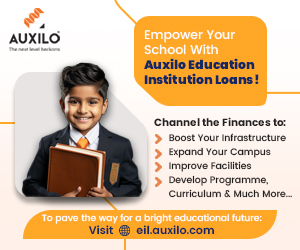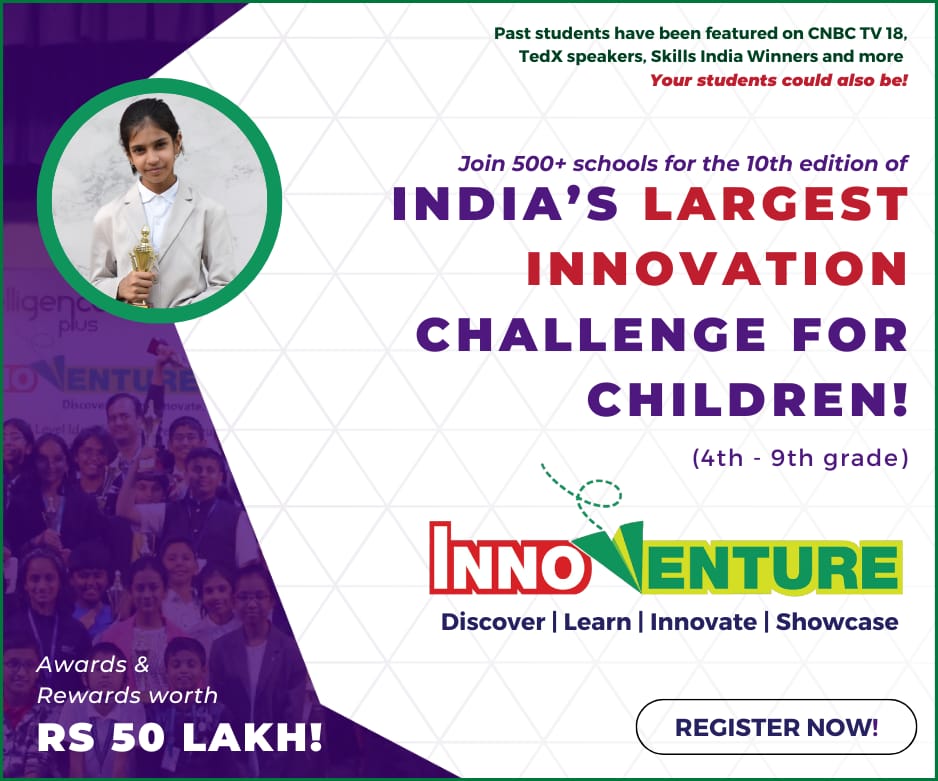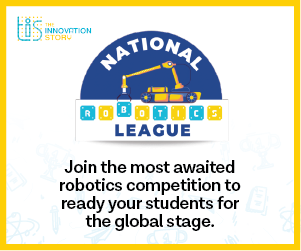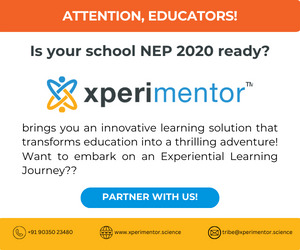 New-age teaching experts believe that learning a concept from a textbook does not effectively explain it or facilitate easy comprehension. For example, certain subjects or concepts can be better understood through laboratory experiments, field trips, and three dimensional (3D) models, etc. AR/VR technologies thus introduce immersive and interactive experiences in the classroom to facilitate learning and knowledge retention.
New-age teaching experts believe that learning a concept from a textbook does not effectively explain it or facilitate easy comprehension. For example, certain subjects or concepts can be better understood through laboratory experiments, field trips, and three dimensional (3D) models, etc. AR/VR technologies thus introduce immersive and interactive experiences in the classroom to facilitate learning and knowledge retention.
It is important for students to enter an immersive world of learning. For example, studying about and understanding the solar system through VR will take the experience to a completely different level for the students. In this workshop, students board a space ship and visit planets of solar system one by one, followed by information and trivia on the solar system. Students find such learning processes very informative and like the fun element involved in the whole process. Moreover, seeing and hearing something that has already been theoretically explained in the class will help in better retention of learning.
Immersive experiences help children to truly enjoy classroom learning thus keeping them engaged during the entire learning process. A recent study conducted by Maryland on VR and memory revealed that students recall improved by 8.8 percent while working in immerse environment in comparison to flat computer screens. More than 40 percent of the study’s participants saw an increase of 10 percent or more recall while using VR.
AR and VR
Augmented reality (AR) and Virtual Reality (VR) are among the top technological trends that are changing the learning experiences today. In recent years, we have been reading about AR & VR in technology but in simple words, it means the following.
- AR is the integration of digital information with the user’s environment in real time.
- Similarly, VR is the experience when the sights and sounds around us are replaced with virtual, computer-generated ones. The resulting environment can be quite natural, and places become fully navigable as we move through them and use our hands to navigate through objects.
Technology will continue to play a larger role in the education system as tools are curated for better opportunities and more customised lessons based on school, class, and student requirement. AR technology has the ability to render objects that are hard to imagine and turn them into 3D models, thus making it easier to grasp abstract and difficult content. This is especially good for visual learners, and practically anyone to translate theoretical material into a practical concept. For example, students may find it difficult to understand concepts in biology, especially anatomy. This barrier can be crossed by exposing them to virtual anatomy lessons. With the VR headsets, they’re transported to a virtual classroom through a skeletal model complete with interactive components like bones and organs. Students enter this world and learn about different organs like the heart in an engaging manner.
Practical learning
Even difficult subject like Mathematics can be integrated with AR to help students understand the concepts. The teacher gives students the printed AR math activities or a PDF file. Students using AR technologies can point a tablet or Smartphone on top of the paper or the PDF file in the computer to see the videos about the theoretical materials and the problem solutions in detail. This is an emerging trend of merging traditional learning with technology in a way that’s fun, exciting and more immersive than any other form of learning.
Range and precision
Above anything, students can connect with their teachers from anywhere, making education accessible on a global level. Diversity in content can bring out the true potential of the range of things that could be achieved. For certain topics or subjects, some AR/VR-based applications have options for the students to answer questions by typing into their laptop or tablets. While the students and the teacher would be able to see the same things or be in a same session, the teacher can highlight or lecture on chosen things more relevant to the lesson.
Interaction
The unique thing about AR is that it combines the physical experience of holding a book and turning the pages with the magic of digital content that appears to almost leap out from the pages.
For instance, from Science to English, students can now engage with 3D animations, sound, narration and other interactive games for a better learning experience. ‘Peter Rabbit’ brought to virtual life via augmented reality app Bookful, launched by an Israeli immersive content company called Inception, is a good example of the technology in education. It features an e-book version using illustrations that come to life throughout the book; the “play” option induces activities where children can interact with characters from the book relating to the story, thereby allowing readers to form deeper connections with the book.
Virtual laboratories
Another way of teaching the concepts of AR and VR in schools is by setting up laboratories that build the cognitive and non-cognitive skills of learners. The content today is mapped with CBSE and all other state boards with AR lessons and immersive VR journeys and school should have the required infrastructure to set up the laboratories in their own premises. They can also use computer labs, libraries or virtual dedicated classroom for setting up AR & VR labs in the schools along with required hardware such as VR Headsets, AR Booklets, and tablets. Another advantage of the technology is that the solutions provided are cost-effective. Hence, schools with low budgets can also deploy AR/VR pods where students can experience the learning at their leisure.
Government aid
Today, government schools are also taking steps to improve the learning outcomes and enhance student learning experiences. The usage of technology has led to a marked improvement in the learning outcomes of the students. For example, in Jawahar Navodaya Vidyalayas, the government-run schools primarily for children from rural parts of India, provide access to quality education through digital learning across their network of 500 schools. These digital classrooms have increased student attention, and reduced absenteeism and school dropouts. It has also improved student familiarity and comfort with technology.
The Education Welfare Department can help revolutionise education in the country by taking the technology to remote areas as well. The content can be altered to vernacular languages to facilitate understanding of rural students. The regional associations can also participate in fulfilling each child’s Right to Quality Education – either by raising funds for the technology through charitable events and/or collaborating with government bodies.
User-controlled interactions
AR also facilitates user-controlled interactions and learning. All one needs to do is download an app on a smartphone or tablet and have access to trigger/tracker images. It provides an active learning environment for the learner, otherwise unattainable. It also provides a great tool for evaluation because of easy monitoring in a virtual/digital environment.
Leap Motion Technology
Emerging technologies like Leap Motion technology where users can explore a VR environment with hand motions can be a game-changer. One essentially uses subtle hand gestures to push, pull, or twirl objects in a VR setting.
So the opportunities for AR/VR to successfully aid education are immense. Immersive experiences help make otherwise tedious subjects engaging and fun for the students. These technologies are redefining the teaching-learning process to make it more efficient and interactive besides inclucating in students a genuine thirst for knowledge.
The author is Yuvraj Krishan Sharma, co-founder & director, Kompanions, an ed-tech start-up that aims to make learning processes fun, easy and impactful.
























